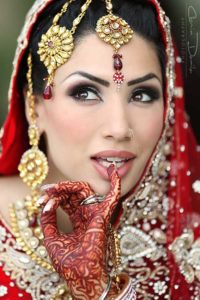The Big Fat Indian wedding: The race is on!
By Nitasha Bhatia
Yes, it’s that time of year again, wedding season is upon us. I love weddings; I mean what is there not to love! It’s my one chance to dress up in my favourite sari, adorn myself with glittery bangles, get my hands painted with mehndi, stuff my face with way too much Indian food and, of course, dance the night away to the latest Bollywood beats.
Yes, one thing is for certain, Indian weddings are definitely a huge spectacle, filled with entertainment, food and frivolity.
The Australian Securities and Investment Commission (ASIC), says that the average Australian spends $36,000 dollars on saying “I do”. Indian weddings, however, tend to be even more exorbitant. Indian parents spend years wishing, hoping and praying that their children get married and want to have the grandest wedding possible. It’s no wonder that the average Indian’s budget is close to $65,000 dollars, close to double the rest of the population.
Having been brought up by a Punjabi father, over the years I have attended my fair share of Punjabi weddings. The Punjabi wedding motto seems to be “do everything king-size”.
As much as I enjoy the fun of Indian weddings, the pressure to be married off before I become “damaged goods” is something I’ve become well accustomed to.
For me it started early, from the ripe age of twenty-one. I vividly recall being asked at a family friend’s wedding “So when is it going to be your turn?” Gradually the questions got worse, “So you are done with uni, what’s next? Maybe it’s time to find you a nice boy.”
And there’s more, “if you don’t get in quick you’ll be left with the duds”.
Yes, I’ve heard it all.
As an Indian-Australian, I’ve grown up navigating two different cultures and essentially two different mindsets. Finding a partner is not as simple as it used to be. For today’s generation dating is an amalgamation of apps like, Tinder and Badoo, and the (in)famous matrimonial website: shaadi.com.
By contrast, arranged marriages were the most common and widely accepted avenue for my parents’ generation. When choosing a partner, more emphasis was placed on the marriage between two families, rather than that of two individuals.
However, as Indian women of today, the prospect of marrying without love is something we eschew.
Recently, SBS featured an observational documentary that followed two Indian Australians, Dalvinder and Tarun, on their quest to find love before the formidable age of thirty. Whilst the documentary made for an evening of light hearted entertainment, it also had a deeper undertone. Director Sean Cousin put a spotlight on the struggle today’s generation face to live out the Western ideal around finding your ”˜one true love’ while balancing the expectations of their Indian parents.
Maybe this is the reason we tune out whenever our parents mention the topic of marriage?
I recently was talking to a group of girlfriends, all of whom are in their mid-twenties, about our plans for the next five years. We covered an array of subjects from travelling to New York, to moving out and buying our first home. Surprisingly though not one of us mentioned marriage.
Perhaps it is just my generation’s attitude, having been brought up in the post-feminist world filled with ample opportunities? According to The Economist Magazine, women of today, aged 25 to 34, are the first generation to start their careers nearly on par with men, earning 93% of men’s wages. Single women of today also buy homes at a faster rate than single men.
With this rise in women empowerment, combined with rising divorce rates and life expectancies, it’s easy to see why so many women are putting marriage on the backburner. More and more women today are opting to focus on their careers and stretch out their singlehood. We are the ”˜YOLO’ (you only live once) generation who have taken living in the moment to new heights.
One thing is for sure. The complexities of marriage for our generation are more so than ever before. Being born or brought up in Australia, the culture clash makes marriage even more confusing. We face questions like:
Should I say ”˜yes’ to my mum’s offer to set me up with that Hindu-Brahmin, vegetarian engineer, who is also well versed in Carnatic music?
Or, just continue swiping right on Tinder?
As a woman of today, do I really want or need to get married?
I agree marriage is a beautiful thing. It represents the union of two people. Marriage is a sacred institution underpinned by trust, respect, loyalty and commitment.
There is no denying that seeing an Indian bride brimming with happiness on her wedding day, in her embellished crimson lehenga and dupatta, decked out with gold jewellery is a feast to the eyes. And watching a couple cement their commitment to each other through the act of walking the ”˜saat phere’ (seven rounds) around the blazing fire is a beautiful sight.
Nevertheless, today’s generation of women are in no rush to walk down the aisle. Women today now enjoy high-powered careers and more freedom than our predecessors, this has turned marriage into a choice, not destiny. It’s no surprise then that so many of us are enjoying being ”˜single ladies’.
Yet whatever side of the fence you are on ”“ whether you are in favour of love marriage, arranged or not getting married at all, the institution of marriage still plays an integral part in each of our lives and yields significant social benefits to the wider community.
I’ve given you my take on it. What’s yours?
Short URL: https://indiandownunder.com.au/?p=6948

